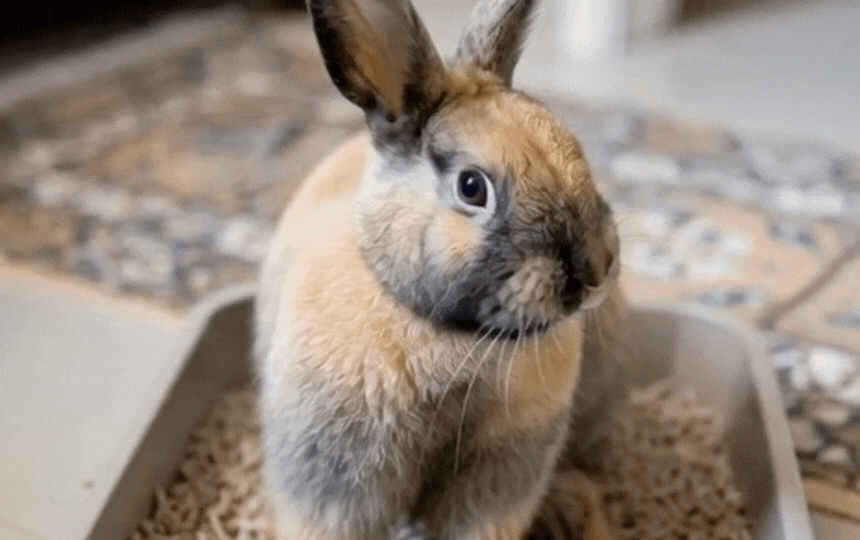Bringing home a new Hamster
EMBARKING ON AN EXCITING JOURNEY
Embarking on the journey of getting a new hamster is filled with anticipation and excitement. These small, adorable creatures can bring immense joy and companionship into our lives. However, it's essential to approach hamster ownership with careful consideration and understanding. In this blog, we will explore the various aspects of welcoming a hamster into your home, from the initial preparations to creating a loving environment and establishing a bond with your furry friend. So, join us as we delve into the world of hamster ownership and uncover the secrets to a harmonious and fulfilling life with your new small pet.
As you bring your hamster home, you'll encounter a series of important milestones. From ensuring a safe and comfortable journey for your new furry companion to settling them into their new habitat, each step plays a crucial role in creating a positive experience for both you and your hamster. Additionally, learning how to handle your hamster gently and confidently will foster trust and deepen the bond between you.
Throughout this blog, we will provide valuable insights, practical tips, and expert advice to guide you through the process. Whether you are a first-time hamster owner or someone looking to refresh their knowledge, this blog aims to equip you with the necessary tools to create a loving and enriching environment for your new hamster.
So, let the adventure begin as we uncover the world of hamster ownership and embark on a wonderful journey of companionship, learning, and cherished moments with your new furry friend.
Do hamsters find travelling stressful?
Hamsters, like most small animals, can find traveling to be a stressful experience. They are creatures of habit and prefer familiar environments. Here are some factors to consider regarding hamster travel:

Hamsters, like most small animals, can find travelling to be a stressful experience. They are creatures of habit and prefer familiar environments. Here are some factors to consider regarding hamster travel:
1. Disruption of Routine: Hamsters thrive on routine and can become stressed when their usual environment is disrupted. Travelling may cause anxiety due to changes in temperature, lighting, smells, and sounds.
2. Sensitivity to Environment: Hamsters have heightened senses and can be easily overwhelmed by new and unfamiliar surroundings. Loud noises, vibrations, or sudden movements during travel can cause stress and fear in hamsters.
3. Motion and Handling: Hamsters are delicate animals, and the motion of transportation, such as car or plane rides, can be unsettling for them. The vibrations and constant movement can cause discomfort and stress. Additionally, handling during travel can further add to their stress levels.
4. Temperature and Humidity: Hamsters are sensitive to temperature and humidity changes. Extreme temperatures, drafts, or high humidity levels during travel can negatively affect their well-being.
Considering these factors, it's generally recommended to avoid unnecessary travel with hamsters unless absolutely necessary.
How best to transport my hamster home?
When transporting your hamster home, it's important to prioritise their safety and comfort. Here are some steps to ensure a smooth and stress-free journey for your hamster:

1. Use a Suitable Carrier: Choose a secure carrier specifically designed for small animals. Opt for a carrier with proper ventilation and escape-proof features. Avoid carriers with large gaps that the hamster could squeeze through.
2. Prepare the Carrier: Line the carrier with a soft bedding material, such as shredded paper or paper towels, to provide a familiar and comfortable environment. Place a small amount of their regular bedding from their cage in the carrier to provide a scent of familiarity.
3. Keep a Stable Environment: Place the carrier in a stable position in your vehicle to minimize movement and vibrations. Avoid placing it near direct sunlight, heating vents, or air conditioning vents, as extreme temperatures can be harmful to the hamster.
4. Minimize Noise and Disturbances: Keep the environment as quiet and calm as possible during transportation. Loud music, sudden movements, or excessive noise can stress out your hamster. Consider covering the carrier with a lightweight cloth or towel to create a dark and cozy environment, reducing external stimuli.
5. Avoid Temperature Extremes: Ensure the carrier is kept at a moderate temperature throughout the journey. Avoid exposing your hamster to extreme heat or cold. If necessary, consider using a heating pad (placed outside the carrier) or a small towel or blanket to provide insulation if the temperature is cold.
6. Minimize Handling: While in transit, it's best to avoid unnecessary handling of the hamster. Excessive handling can increase stress and anxiety. Only handle the hamster if necessary for safety or health reasons.
7. Take Short Breaks: If you're travelling long distances, plan for short breaks to check on your hamster. However, exercise caution when opening the carrier, ensuring it is in a secure and enclosed space to prevent any escape.
Remember, the journey should be as short as possible to minimize stress on your hamster. Once you arrive home, place the hamster in their new habitat with familiar bedding, food, and water, and allow them time to adjust to their new surroundings. Monitor their behaviour and ensure they are eating, drinking, and behaving normally.
If you have concerns or need additional guidance, it's advisable to consult with a veterinarian experienced in small animal care.

All Things Hamsters For Kids
Is a book for the whole family filled With Plenty of Facts, Photos, and Fun to Learn all About Hamsters.
The book is colourful and filled with stunning images, it blends fun with education in simple and easy-to-understand writing for readers 6 years old and upwards.
It offers plenty of incredible facts and topics ranging from their history, evolution, characteristics, diet, and life cycle.
HAMSTER TRAVEL CARRIER
The Youzui Hamster Travel provides complete living facilities, including water bottle and can meet the needs of your hamster even for a longer trip.
It is compact in size measuring 29cm length, 20cm width and 18cm height.
The cage allows small animals to breathe freely and enhances the travel experience it is made from high-quality PP material, which is wear-resistant and durable.
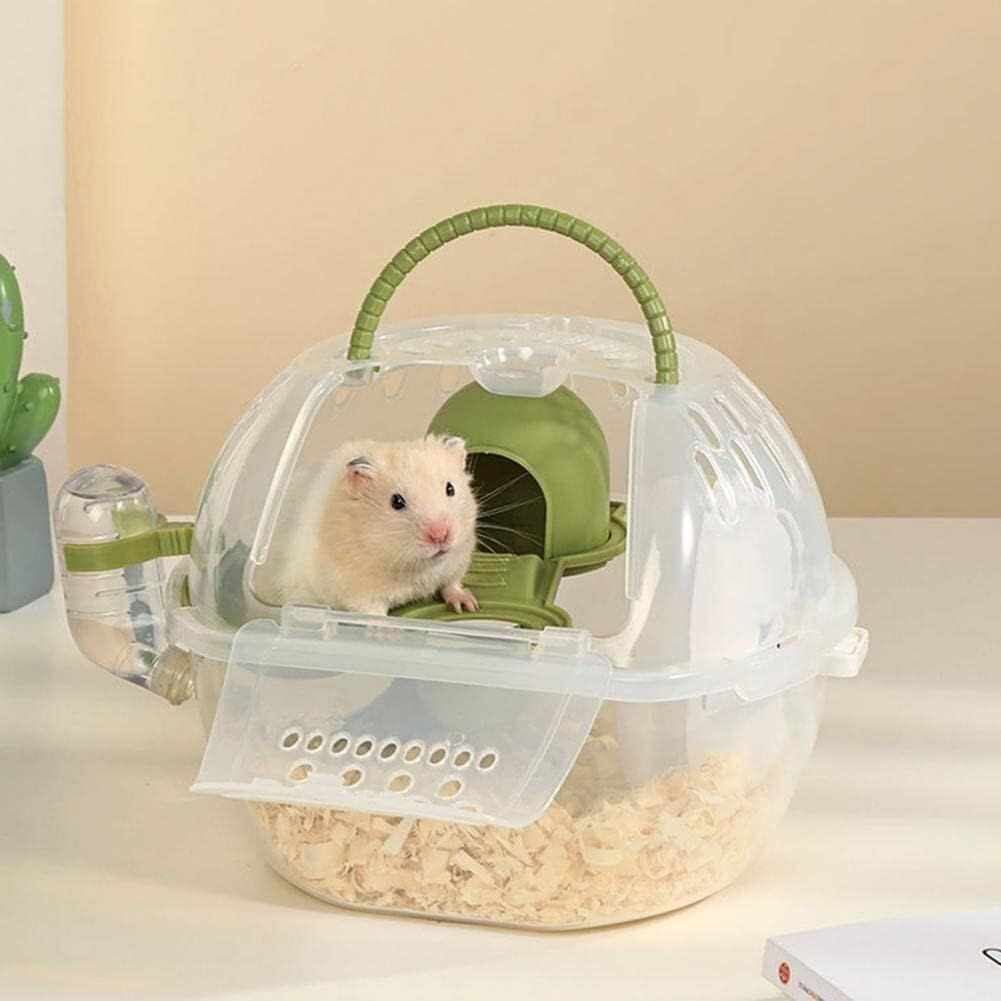

B/A Pet Bedding Small Animals
Both when transporting and in your hamster’s cage it is important to allow them plenty of cozy bedding.
This B/A bedding is a natural Small Animal Bedding, that is almost Dust-Free and Odor and Moisture Absorbent.

What should I do the first day I get my hamster?
The first day you bring your hamster home is crucial for their well-being and adjustment to their new environment. Here are some steps to take on the first day:
1. Set up the Hamster Habitat: Before bringing your hamster home, make sure their habitat is ready. Set up the cage with appropriate bedding, food, water, hiding spots, toys, and an exercise wheel. Ensure the cage is secure and free from any potential hazards.
2. Provide a Quiet Environment: Place the hamster's cage in a quiet area of your home where they won't be disturbed by excessive noise or activity. Avoid placing the cage near direct sunlight, drafts, or areas with temperature fluctuations.
3. Give the Hamster Time to Adjust: After bringing the hamster home, it's important to give them time to acclimate to their new surroundings. Limit handling and disturbances on the first day to allow them to feel secure and comfortable in their new habitat.
4. Offer Fresh Food and Water: Ensure your hamster has access to fresh food and water. Provide the same type of food they were accustomed to before, as a sudden change in diet can upset their digestive system. Additionally, provide fresh vegetables or treats suitable for hamsters in small quantities.
5. Observe and Monitor: Spend time quietly observing your hamster from a distance. Allow them to explore their new habitat at their own pace. Take note of their behaviour, eating habits, and overall well-being. If you notice any signs of distress, consult a veterinarian.
6. Avoid Overwhelming the Hamster: Resist the temptation to handle the hamster excessively on the first day. While gentle interactions can help them become accustomed to your presence, it's important not to overwhelm them with too much handling or noise.
7. Begin the Bonding Process: Talk to your hamster softly and offer treats from your hand, allowing them to approach you if they feel comfortable. Building trust and a bond takes time, so be patient and allow your hamster to initiate interactions on their own terms.
Remember, every hamster is unique, and their adjustment to a new home may take some time. Be patient, provide a calm and secure environment, and gradually introduce handling and interaction as your hamster becomes more comfortable.
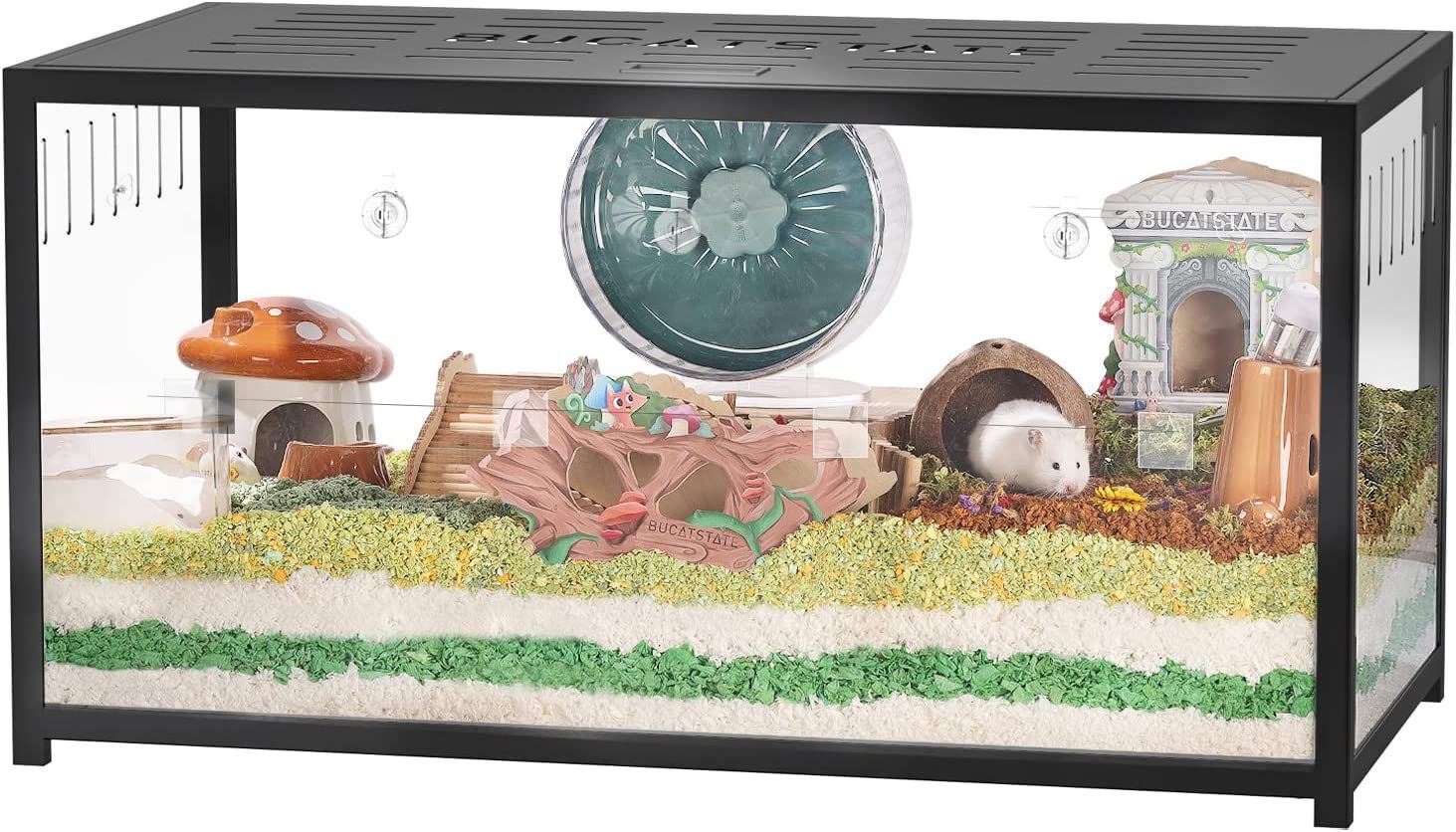
BUCATSTATE Hamster Cage
This is a spacious enclosure has a deep base that can accommodate 24cm height thick layer of bedding. It is built in a metal frame with high-quality acrylic boards that achieve structural stability.
It is designed to be stackable with slide-in connections if you decide to expand your hamster family, but they cannot live together.
Hamster Sand Bath
This hamster Toilet and Washroom comes with a shovel and is a great enrichment to your hamster's environment.
Hamsters enjoy playing, rolling and digging in the bath sand to keep their fur healthy by removing excess oil from their bodies while having fun. This product can also be used as their toilet room.
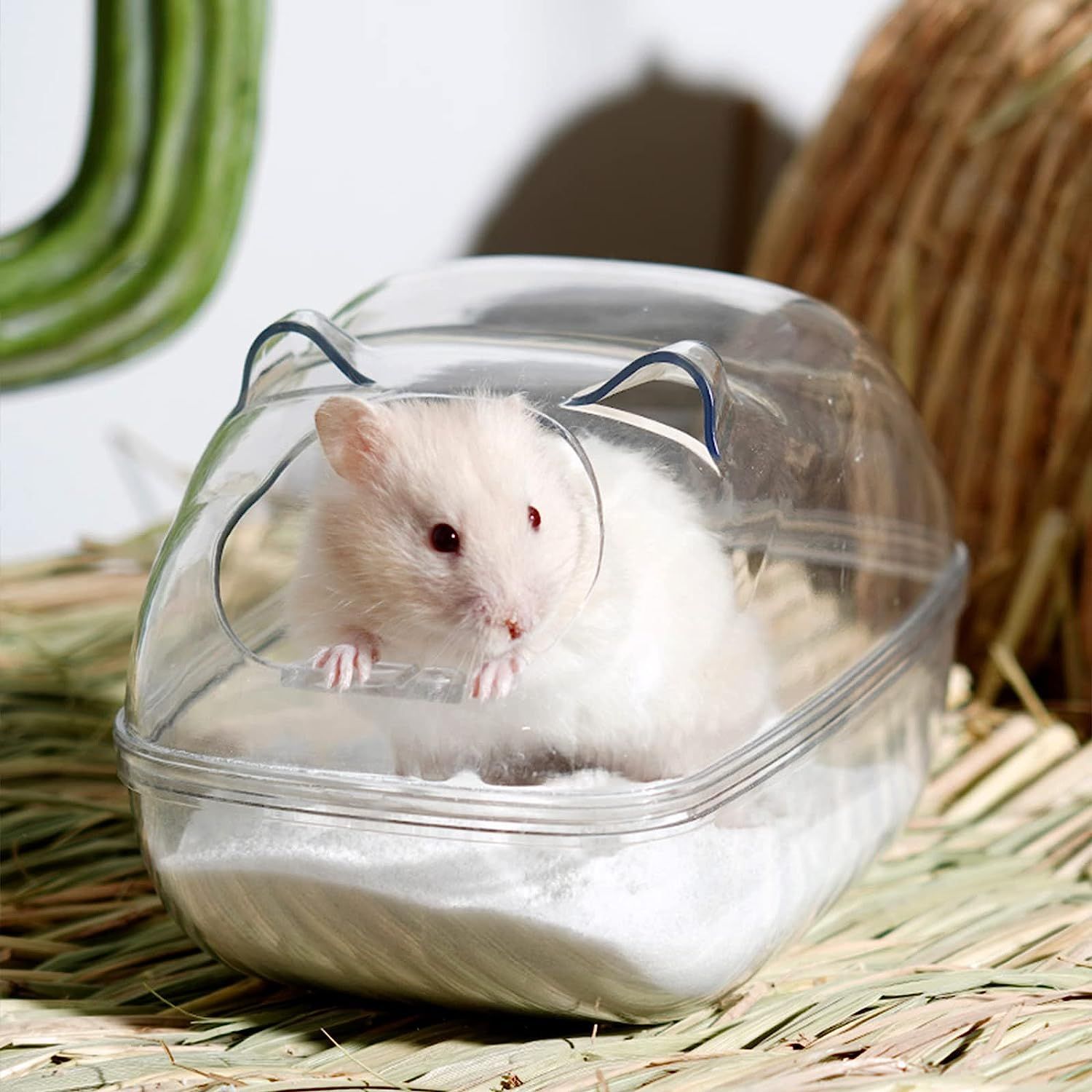
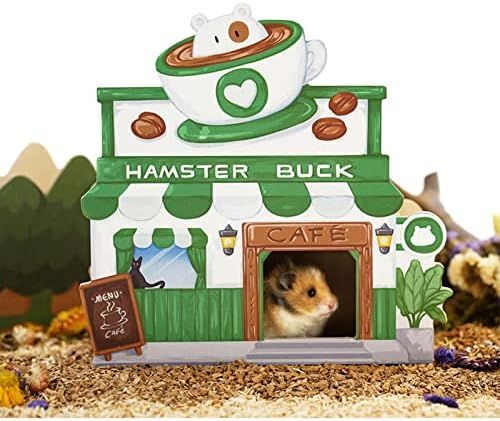
Hamster café House
Want something a bit more fun and unusual. We think this Vivid Café Shop Pattern is the cutest.
It is made from natural Beech & Birch wood. It is on the large side for a hide so make sure to check that there is enough space in your cage before purchase 😉 The hideout has smooth sanded corners and doubles as a hide and climbing ramp
Can I hold my hamster on the first day?
It's generally recommended to avoid excessive handling and give your hamster some time to settle into their new environment before attempting to hold them on the first day. The first day can be stressful for a hamster as they adjust to their new surroundings, and they may need time to feel secure in their cage.
However, every hamster is different, and some may show curiosity and willingness to be held earlier than others. If your hamster appears calm and curious, you can try gently offering your hand for them to sniff and explore. If they willingly climb onto your hand, you can carefully lift them, supporting their body and keeping them close to the ground or seated to prevent falls.
It's important to be patient and observant of your hamster's behaviour. If they seem anxious, try again at a later time when they appear more relaxed and comfortable. Gradually increase the duration and frequency of handling sessions as your hamster becomes more accustomed to you and their new surroundings.
Always remember to handle your hamster gently and avoid squeezing or gripping them too tightly. Additionally, wash your hands before and after handling your hamster to ensure cleanliness and prevent the transmission of any harmful bacteria.
Building trust and a bond with your hamster takes time, so it's essential to respect their individual comfort levels and allow them to dictate the pace of interaction.
How long does it take a new hamster to settle?
The time it takes for a new hamster to settle into their new environment can vary from hamster to hamster. Some hamsters may adjust relatively quickly, while others may take more time to feel comfortable. Generally, it can take anywhere from a few days to a few weeks for a hamster to fully settle into their new surroundings.
Here are a few factors that can influence the settling period:
1. Individual Personality: Each hamster has its own unique personality and temperament. Some may be naturally more curious and adaptable, while others may be more cautious and require additional time to feel secure.
2. Previous Experiences: The hamster's previous experiences, such as their upbringing and socialization, can influence how quickly they adjust to new environments. Hamsters that have been handled and socialized from a young age may adapt more quickly.
3. Age of the Hamster: Younger hamsters, especially those who haven't reached sexual maturity, tend to adjust more easily to new environments. Older hamsters may take longer to settle due to their established habits and preferences.
4. Environment and Care: Providing a calm, quiet, and enriched environment for your hamster can help facilitate their adjustment. Ensuring they have proper food, water, bedding, hiding spots, and toys will contribute to their well-being and comfort.
During the settling period, it's important to give your hamster time and space to explore their new habitat at their own pace. Minimize disturbances, loud noises, and excessive handling to reduce stress. Observe their behaviour, appetite, and activity levels to ensure they are adjusting well.
Gradually introduce interactions and handling as your hamster becomes more comfortable. Offer treats, speak softly to them, and allow them to approach you willingly. Building trust and a bond with your hamster takes patience and consistency.
If you notice any signs of prolonged stress, persistent hiding, refusal to eat or drink, or other concerning behaviours, it's advisable to consult with a veterinarian experienced in small animal care. They can provide guidance and ensure your hamster's well-being during the settling period.
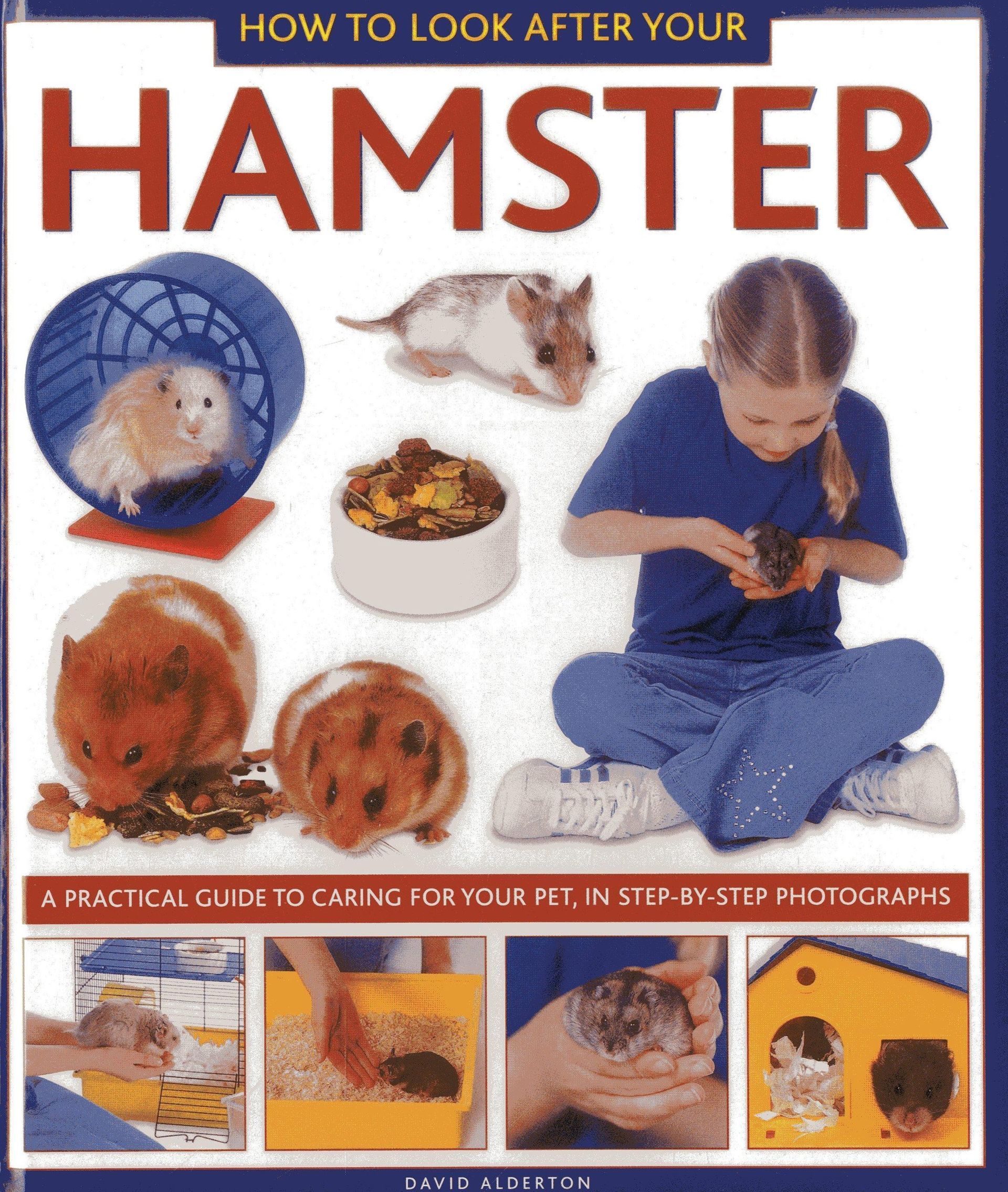
How to Look After Your Hamster
This is a practical guide to caring for your pet, in step-by-step photographs.
It is filled with useful information and guidance, from how to choose a hamster, to feeding and healthcare.
It includes practical advice on how to handle your hamster, what to do if it escapes, and how to keep it safe from danger, all shown in 60 easy-to-follow photographs.
Training Your Pet Hamster
By Author: Gerry Bucsis
This book provides advice on getting acquainted with your new pet, information on pet behaviour, tips on hassle-free travel, and suggested games to teach your pet.
Topics specific to hamster care include: Correct handling of hamsters, Equipment and toys suited for hamsters, Advice on food, health care, and much more
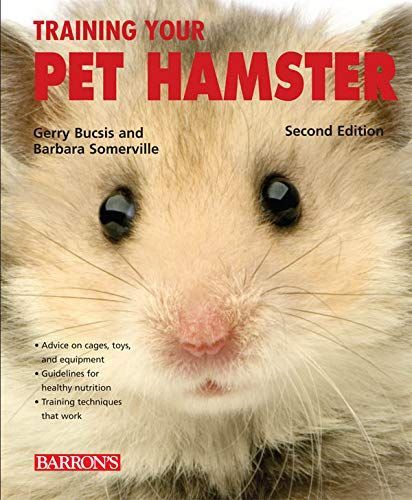

How do I start holding my hamster?
When starting to hold your hamster, it's important to go at their pace and build trust gradually. Here are some steps to follow:
1. Create a calm environment: Choose a quiet and secure area where you can interact with your hamster. Make sure there are no distractions or loud noises that could startle them.
2. Wash your hands: Before handling your hamster, wash your hands thoroughly to remove any scents or residues that might be unfamiliar or off-putting to them. This helps to create a neutral scent and reduces the chances of your hamster feeling threatened.
3. Offer treats and positive reinforcement: Begin by offering your hamster some of their favourite treats, like small pieces of vegetables or fruits. Allow them to approach and take the treats from your hand. This helps to associate your presence with positive experiences and builds trust.
4. Gradually introduce your hand: After your hamster is comfortable taking treats from your hand, start slowly introducing your hand by placing it near them without making sudden movements. Allow them to investigate and sniff your hand at their own pace.
5. Use a cupped hand or scoop method: When your hamster feels more comfortable with your hand, you can try gently scooping them up using a cupped hand technique. Place one hand beneath them, supporting their body, while using the other hand to gently guide them into your cupped hand.
6. Be patient and gentle: Hamsters are delicate creatures, so it's important to handle them with care. Avoid squeezing or gripping them tightly, as this can cause injury or stress. Support their body with your hands and keep them close to the ground or seated to prevent falls.
7. Start with short handling sessions: Initially, keep the handling sessions short to avoid overwhelming your hamster. Gradually increase the duration as your hamster becomes more comfortable and relaxed in your presence.
8. Observe your hamster's behaviour: Pay attention to your hamster's body language and reactions during handling sessions. If they show signs of stress, such as trying to escape, biting, or becoming overly anxious, it's best to give them a break and try again later.
Remember, each hamster has its own personality and comfort level with handling. Some hamsters may become more accustomed to handling quickly, while others may take more time. Be patient, consistent, and always prioritize your hamster's well-being and comfort.
In conclusion
Bringing home a new hamster can be an exciting and rewarding experience for both you and your new furry friend. Throughout this blog, we have explored steps and considerations involved in ensuring a smooth and successful transition for your hamster into their new home.
First and foremost, creating a safe and comfortable habitat is crucial to promote your hamster's well-being and happiness. By carefully selecting an appropriate cage, bedding, and accessories, you can provide them with an environment that mimics their natural habitat, fostering a sense of security.
Additionally, understanding your hamster's dietary needs and providing a balanced and nutritious diet will contribute to their overall health and vitality. Regular monitoring of their eating habits and making necessary adjustments will ensure they receive the proper sustenance.
Remember that hamsters are creatures of habit, and introducing them to a consistent daily routine can help reduce stress and facilitate bonding. Interacting with them gently and patiently will gradually build trust and strengthen the bond between you and your new companion.
Welcome your new friend into your home with open arms and a warm heart, and you will both embark on a wonderful and fulfilling companionship that will bring joy and happiness for years to come.
Thank you for reading this post. We hope that you found it interesting and hope to you visit this page again soon. For more information, fun facts and cute photos, please follow us on social media. 🐹
THANK YOU
Thank you for reading this post. We hope that you found it helpful and hope to you visit this page again soon. For more information, fun facts and cute photos, please follow us on social media. ❤️
Disclosure & Disclaimer: Some of the links in this blog may be affiliate links, which means we earn a small commission if you click through and make a purchase. This comes at no additional cost to you but helps support the continued production of content. We only recommend products and services we believe will add value to our audience. The content provided is solely for informational purposes. Any advice provided is based on personal experience and research and may not be suitable for everyone. Before implementing any advice, please consult with a professional to ensure it's appropriate for your specific situation. Thank you for your support.

